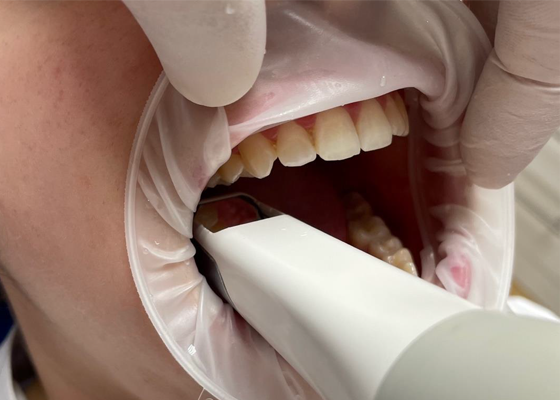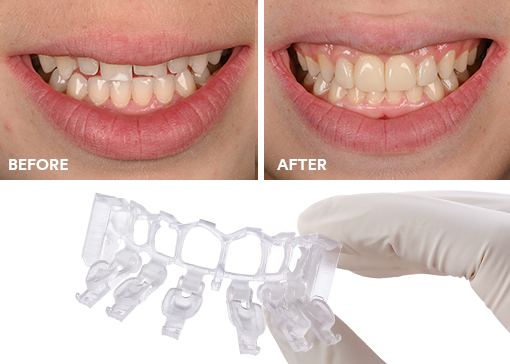Zirconia puzzle: what makes zirconia unique and how to choose the right zirconia
Zirconia may be part of your everyday vocabulary, but how much do you know about this ceramic material? Learn more…


The quality of your impression can make or break a restorative procedure, but how do you choose the best method for each case? Take a closer look at digital and traditional methods and materials, and how to achieve accurate results with each.
Dental professionals know that precise, high-quality impressions are critical to the success of a restorative procedure, but which impressioning method and material will help you achieve the most efficient, accurate results?
Dentistry is constantly evolving, and that includes the way we approach and achieve impressions. In the past, conventional, physical impressions were the only available impressioning option, but with the advent of digital solutions, there is more to consider than ever. In this article, we will explore impression taking, traditional and digital methods, and how to select the best method for each case.
While digital dental solutions have been around since the 1980s, digital impressioning has grown in popularity in recent years for a number of reasons. In addition to being cost-effective, working digitally eliminates much of the labor and guesswork associated with traditional impressions, and greatly reduces waste and the risk of errors. I’ve been using a digital scanner for about seven years now, carrying out prosthetic rehabilitation using digital impressions, and I truly believe digital impressions can change a dentist’s life.
A significant benefit of digital impressioning is its accuracy. In a traditional impression workflow, there are many places where errors can occur that can lead to inaccurate results. And unfortunately, it’s not always easy to catch mistakes before sending the impression to the lab – and if you find any errors, you have to repeat the entire process. In contrast, digital impressions allow clinicians to magnify and evaluate a digital scan (reviewing parallelism, spacing, and more) and correct any mistakes while the patient is still in the chair. Plus, you have the advantage of being able to take a full bite scan rather than relying on registration material. It’s simply not easy to reproduce the same quality of restoration traditionally as it is with digital (fig 1).
Another aspect I love about digital dentistry is the time involved. The scanning process is faster and less complex than analog impressions, meaning less time in the chair and a more comfortable patient experience. Even so, you’re not racing against the clock. Since you’re not working with traditional materials and respecting their working or setting times (or managing uncomfortable patients), you can take your time to identify errors and ensure accuracy. And the time savings don’t end in the operatory! Once the scan is uploaded, it can be instantly and securely shared with the lab or other specialists. Furthermore, in many cases, digital restorations can be fabricated much faster than traditional methods.
One more great advantage of digital dentistry is the technician workflow. During the prosthetic realization process, the dental technician has greater control in each phase, reducing the risk of errors. Conversely, conventional workflows require many more steps, meaning more chances for mistakes and more errors in the final restoration.
I love using scanners for preps, crowns, and veneers. Particularly when you have 1-2 units, digital dentistry is great, because you can quickly and easily obtain an accurate soft tissue transfer. While you can obtain the intrasulcular space and condition analogically, it will take longer, and the dental technician needs their own physical copy of the transfer to replicate the soft tissue. With digital, you can then scan the temporary and the software allows you to send that information directly to the lab in seconds. You and your patients can also preview the planned results, which goes a long way toward acceptance. It’s generally very difficult to explain treatment plans to patients – let’s face it, a verbal description isn’t usually enough. With digital, you can show them your intended strategy.
However, as with any dental procedure, digital impressions do have drawbacks. First, it can be hard to get started – it took me a fairly long period working with my dental technician to obtain the same quality with a digital workflow as with analog. When you buy a scanner, you may receive training, but you don’t necessarily have someone on hand to guide you. Plus, each scanner is different and comes with its own specifications and best-use techniques, so there will always be a learning curve. With this in mind, it’s very important to get to know your devices, stay up to date, and, most importantly, have a technician well-versed in digital techniques. It’s difficult to start with a technician who is unfamiliar with digital dentistry. And while I’d like to use a digital scanner in every case, the technology simply isn’t there yet. While soft tissue must be properly retracted for both traditional and digital impressions, some situations require the pressure exerted by conventional materials to properly expose the margins – particularly when they’re subgingival.
For dentures, implants and larger units, I still prefer to use conventional impressioning techniques. The problem with larger units is that it’s challenging to read and scan soft tissue, and there can be a lot of issues scanning a full arch and implant. In some cases, I try to scan the upper and lower arch and take an analog impression. The dental technician then compares the two and often finds problems. Sometimes, we obtain a good match with the upper arch, but it’s not always precise enough. Today, I always prefer an analog impression for a full arch – yes, it’s a longer protocol, but time is less important than the end quality.

Figure 1: Digital scan of a patient’s smile.
As stated above, while digital impressioning has its benefits, traditional impressions still have a lot of utility in the modern dental practice – mainly for implants, dentures and larger units. And when it comes to these and any physical impressions, the best ones start with the right materials and tools, followed by the right technique. The ideal impression material is stable, rigid, biocompatible, hydrophilic, accurately reproduces teeth and soft tissue, handles well, flows well, and has sufficient working time for your procedure. Impressions can be stressful; you don’t want to race through them.
While there are many different materials to choose from, I prefer polyether (PE), like 3M™ Impregum™ Polyether Impression Material, in most cases because it has a very long working time, so you have enough time to remove the retraction cord and load and seat the impression tray. For implants, I like to use a double impression technique – first, a heavy/medium body material followed by a light body material to read all the soft tissue properly. Prior to impression taking of my implants, I like to use a bisacrylic temporary material to splint the impression copings. I wrap a cord around the transfer copings and use a ligature wire to connect them and to increase stability. I then use a bisacrylic temporary material between the impression copings to obtain a rigid structure. Next, I take the impression using a 2-step impression technique with an open tray for easy access to the transfer screws. While it’s a longer protocol than digital, this workflow ensures precision, which is always more important than time (fig 2).

Figure 2: Conventional implant impressioning technique. Photos courtesy of Dr. Carlo Arcara
a. Initial situation with transfer copings
b. Wire wrapped around copings for stability
c. Double impression technique, starting with heavy/medium body impressioning material
d. Second step of double-impression technique – light impressioning material applied to read soft tissue
e. Final impression
As noted earlier, dentistry is always evolving, which is why it’s vital to stay up to date with research and continuing education. Literature and education can help guide you to the best protocols for your patients – and help you discover new avenues to improve efficiency and grow your practice. New techniques and innovative products are coming to market all the time – which now include digital systems.
I’m a digital dentist and I’m really excited for workflows that give me the best for my patients. However, digital dentistry is still very new and still has a long way to go. If you’re new to digital technology, it’s important to do your research and read the literature critically before investing in new systems. And once you do, take the time to learn the devices inside and out and develop a relationship with a good digital dental technician and lab.
When it comes to impressions, you have several methods to choose from, and unfortunately, there’s no one size fits all choice right now. Digital dentistry offers new opportunities to improve efficiency and help you achieve accurate results for specific clinical situations – but only if you commit to education, research, and finding the right technician. On the flip side, traditional methods still have a great deal of utility and shouldn’t be overlooked. By exploring your options and staying up to date, you can provide the best possible treatments for your patients.

Zirconia may be part of your everyday vocabulary, but how much do you know about this ceramic material? Learn more…

Achieving the correct shape is vital to a natural-looking anterior composite restoration. Learn how the 3M™ Filtek™ Matrix, paired with…

Direct composite restorative procedures can be challenging, particularly when it comes to esthetic cases. Discover how new techniques and tools…